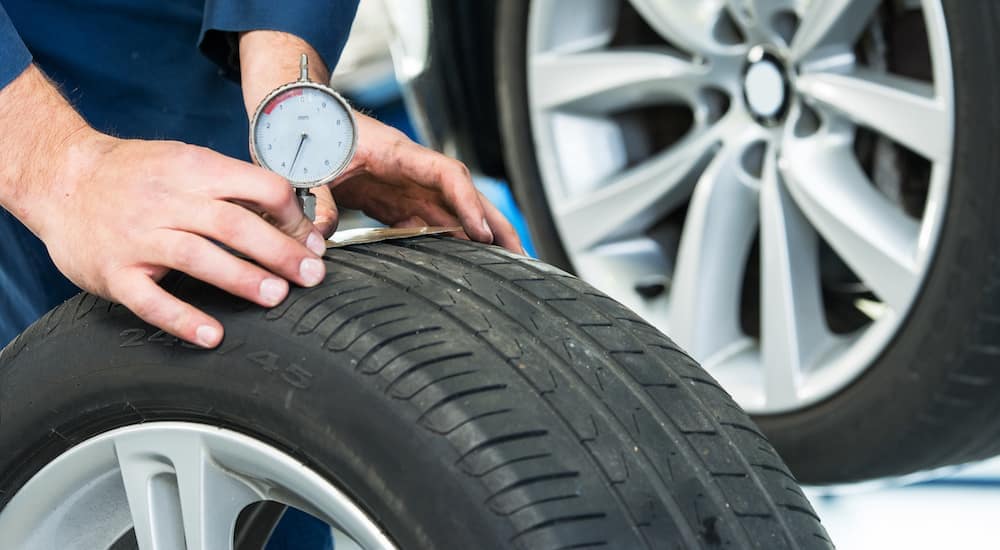Maintaining your car is an enjoyable journey, and checking your tires is an important skill that every car owner should learn. Ensuring your wheels are ready for the road will not only keep you safer but will also extend the life of your tires. This beginner-friendly guide will teach you the basics of checking your own tires so you can keep your wheels in good condition.
Find Out Why Tire Inspections are Important:
Tires are the part of your car that hits the road, so it’s important to keep them in good condition for safety and speed. Regular tire inspections can help catch problems before they worsen, keeping you safe and preventing your car from breaking down when you least expect it. If you’re a beginner, adding a simple tire inspection to your regular car maintenance routine will make driving more enjoyable and help maintain the overall health of your car.
Important Tools for Inspecting Tires:
Before you begin the inspection process, you have some important tools that will help you do your job better:
- Tire Pressure Gauge: See how much air is in each tire.
- Tread Depth Gauge: This tool checks the depth of your tires’ tread.
- Penny: For quick tests, this can be used in place of the tread depth measurement.
- Flashlight: This is useful for checking tires when it is dark.
- Valve Caps: Make sure your tires are properly inflated.
Now that you have the tools, you can check the condition of your tires.
How to Check Your Tires Yourself, Step by-Step?
Step 1: Check the Oil in the Tires
The right amount of air in your tires is important for safety, gas mileage and even tire wear. Use a tire pressure gauge to check how much air is in each tire. You can usually find the recommended pressure in your car’s manual or on a sticker on the inside of the driver’s side door frame. Check the pressure according to the recommended amount and add or remove air if necessary.
Step 2: Check the Tread Depth
Tread height is very important for grip and handling, especially in wet or slippery conditions. To know the depth of your tread grooves, use a tire depth gauge. If you don’t have a wheel depth gauge, you can quickly use a penny. Place a coin in the hole so that Lincoln’s head is pointing down. If you can see the top of your Lincoln’s head, it’s time for new tires.
Step 3: Look for Uneven Wear
Check each tire for signs of uneven wear, which could mean the balance or suspension is not working properly. Feel the surface of the tire with your hands to see if there are any imperfections. Worn patterns may not even have bald spots, feathers or cups. If you see these trends, you should have your car inspected by a professional mechanic.
Step 4: Look for Visible Damage
Check the tread and sides for visible damage, such as cuts, bulges or holes. If these things are not repaired, they can weaken the structure of the tire and cause a blowout. If you notice any damage, discuss it with a professional to determine if the tire can be repaired or needs to be replaced.
Step 5: Check the Valve Stem
The valve stem is very important to keep the tire pressure at the correct level but is often forgotten. Make sure the valve cover is properly secured to prevent dirt and water from entering the valve core. If you are missing a valve cover, it should be repaired as soon as possible.
Step 6: Find Out the Age of Your Tires
Even if the tread looks good, the tire rubber can break down over time. Look for the tire identification number (TIN) on the rim, which contains the date of manufacture. Tires typically have a lifespan of six to ten years, but this depends on how they are used and stored. If your tires are approaching this age, you may need new tires, even if the tread looks good.
Step 7: Rotate the Tires
Tire rotation ensures even wear and extends the life of your tires. Recommended rotation patterns and frequencies can be found in your vehicle manual. If you’re not sure or it’s been a while since you replaced your tires, you may want to replace them while having them inspected.
How to Get Started?
- Frequent: Tires should be inspected at least once a month and before long trips. Regular inspections detect problems early and stop them before they become dangerous.
- Ensure the Correct Tire Pressure: Having the correct tire pressure is important for safety and to save fuel. Make it a habit to check and change your tire pressure regularly.
- Learn to Read Tread Wear Patterns: Understanding common tread wear patterns can help you identify potential problems with your car’s suspension or balance.
- Invest in a Good Tire Pressure Gauge: A good tire pressure gauge will give you accurate readings, allowing you to keep your tires at the correct pressure.
- Follow Manufacturer’s Recommendations: Follow your vehicle’s manufacturer’s maintenance schedule. This depends on the model and brand.
Conclusion:
Good job! You have completed your own tire inspection. Regular tire inspections are a simple and effective way to ensure road safety and extend the life of your tires. As a beginner, mastering this skill is the first step to completing more difficult car maintenance tasks. Remember, well-maintained tires not only keep you safe, but also make driving easier and more comfortable. I wish you a pleasant journey!
